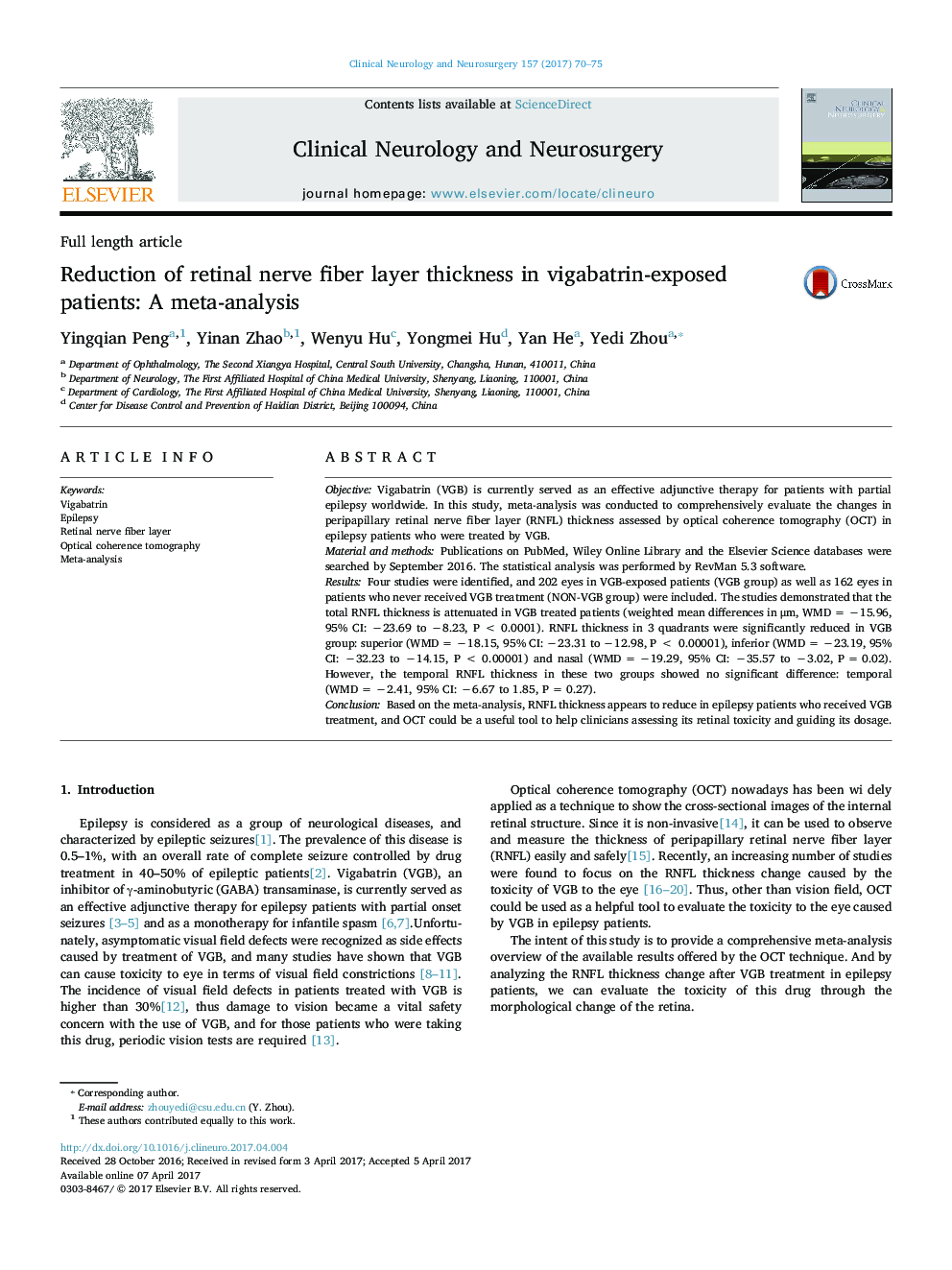| Article ID | Journal | Published Year | Pages | File Type |
|---|---|---|---|---|
| 5627142 | Clinical Neurology and Neurosurgery | 2017 | 6 Pages |
â¢Vigabatrin (VGB) exposure attenuated the mean RNFL thickness in epilepsy patients.â¢VGB treatment reduced almost the entire retinal layer except the temporal quadrant in epilepsy patients.â¢OCT could be a helpful tool to assess the retinal toxicity of VGB and guiding its dosage for epilepsy patients.
ObjectiveVigabatrin (VGB) is currently served as an effective adjunctive therapy for patients with partial epilepsy worldwide. In this study, meta-analysis was conducted to comprehensively evaluate the changes in peripapillary retinal nerve fiber layer (RNFL) thickness assessed by optical coherence tomography (OCT) in epilepsy patients who were treated by VGB.Material and methodsPublications on PubMed, Wiley Online Library and the Elsevier Science databases were searched by September 2016. The statistical analysis was performed by RevMan 5.3 software.ResultsFour studies were identified, and 202 eyes in VGB-exposed patients (VGB group) as well as 162 eyes in patients who never received VGB treatment (NON-VGB group) were included. The studies demonstrated that the total RNFL thickness is attenuated in VGB treated patients (weighted mean differences in μm, WMD = â15.96, 95% CI: â23.69 to â8.23, P < 0.0001). RNFL thickness in 3 quadrants were significantly reduced in VGB group: superior (WMD = â18.15, 95% CI: â23.31 to â12.98, P < 0.00001), inferior (WMD = â23.19, 95% CI: â32.23 to â14.15, P < 0.00001) and nasal (WMD = â19.29, 95% CI: â35.57 to â3.02, P = 0.02). However, the temporal RNFL thickness in these two groups showed no significant difference: temporal (WMD = â2.41, 95% CI: â6.67 to 1.85, P = 0.27).ConclusionBased on the meta-analysis, RNFL thickness appears to reduce in epilepsy patients who received VGB treatment, and OCT could be a useful tool to help clinicians assessing its retinal toxicity and guiding its dosage.
